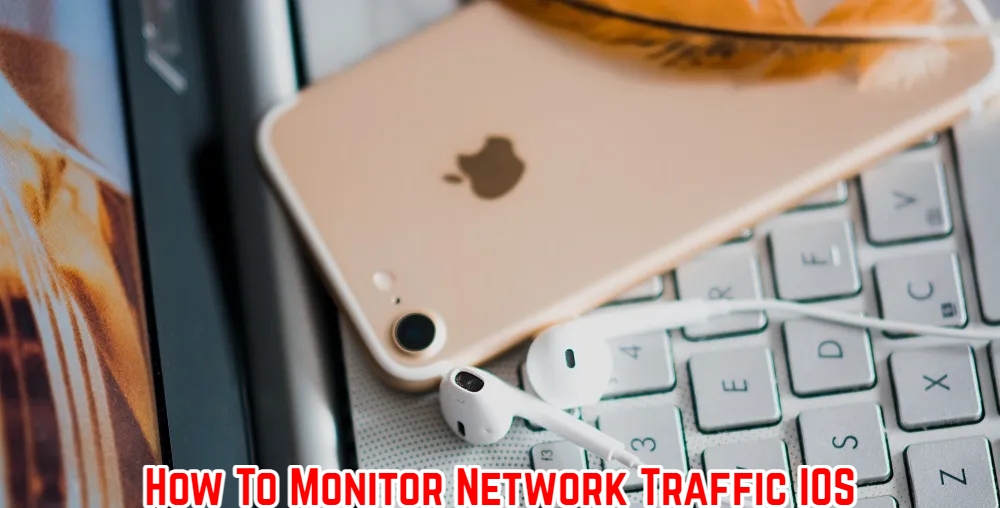How To Monitor Network Traffic IOS With privacy being such a hot topic in the tech world, you might be curious about what domains an app or website may secretly communicate with while you’re using it on your iPhone or iPad.
Little Snitch is a well-known app that allows you to monitor network activity in great detail.
Little Snitch is a small app that sits on the macOS menu bar and monitors all incoming and outgoing network traffic on the Mac for the uninitiated. It primarily consists of three key monitoring features:
- It can track the live upload and download speeds
- provides a live and historical list of domains that the Mac is downloading data from or uploading data to, categorized by location
- It gives you control to allow or deny connections from specific domains
As a result, it’s a useful tool for preventing remote attacks and security breaches.
Users of Little Snitch, who are frequently iPhone or iPad users, may be interested in a similar tool for iOS and iPadOS. Even regular iOS users may find themselves in need of a network monitoring tool on occasion. We’ll look at how to get Little Snitch-like features on iOS and iPadOS in this article.

Table of Contents
Is Little Snitch for iPhone and iPad available?
Little Snitch is not currently planned for iPhone or iPad, according to an official statement from the company, because Apple’s App Store guidelines prohibit third-party apps from operating at the system level on iOS, iPadOS, tvOS, or watchOS. Little Snitch requires system-level permissions to do what it does.
iOS network monitoring (Little Snitch alternative for iPhone, iPad)
Despite the limitations of monitoring iOS HTTPS or HTTP network traffic, iOS 15.2 and some features introduced in iOS 14 now allow you to monitor a few key aspects of your network activity natively on iOS devices. We’re referring to the App Privacy Report.
What is a Privacy Report for an App?
App Privacy Report is a feature of iOS (15.2 and up) that shows you the domains and trackers your device communicates with while using a specific app or website. Although App Privacy Report only covers a small portion of what Little Snitch offers macOS users, it can nevertheless provide meaningful information into how you use a website or app.
Based on your usage, the App Privacy Report gives a 7-day overview of the following information:
- Data & Sensor Access, including details about an app’s access to Location, Photos, Camera, Microphone, Contacts, and more.
- Network Activity, including information about domains that have been contacted either by apps you’ve used or websites you’ve visited within the apps.
We’ll look at how to enable and view App Privacy Report for iPhone and iPad in the section below.
ALSO READ:How To Get Coachella Skins in Fortnite
On the iPhone and iPad, how to use the App Privacy Report
Ensure that App Privacy Report is enabled on your device after updating to iOS 15.2. To do so, follow these steps:
- On your iPhone or iPad, open the Settings app.
- Tap Privacy.
- Scroll to and tap App Privacy Report.
- Turn on App Privacy Report, if not already done.
When you turn it on, you’ll be able to see the app’s activity over the last seven days. The first area is titled Data & Sensor Access, and it lists all of the apps you’ve used, as well as their sensor access history.
The domains that have been contacted in the last 7 days, either directly or through content within an app, are listed in App Network Activity.
Website Network Activity displays domains that have been contacted in the last 7 days by websites you’ve visited through apps. You may also view website network activity for a specific website visited in Safari on iOS by going to the website in Safari, clicking the Double-A button on the left side of the Safari address bar, and then tapping Privacy Report.
Most Contacted Domains displays the web domains that have been contacted the most in the last 7 days by all of your apps, either directly or through in-app web content.
Note: Things like tapping on an article in a social app’s news feed or watching a video embedded in an app can cause domains to be contacted from in-app content.
Check out Apple’s official documentation on their support page to learn more about App Privacy Report.
What should you do if you see unusual behaviour on your app? Report on Privacy
App Privacy Report is currently read-only and does not allow you to take any action directly from the report. Here are some possible actions to take if you discover suspicious behaviour in the App Privacy Report.
If you wish to restrict the access of certain apps to sensor data (such as Camera, Microphone, Photos, Location, and so on), go to Settings, touch on the app, and delete or modify the desired permissions.
Note: You can also double-check these permissions in Settings >> Privacy. You can establish distinct app-specific permissions for each of the various permissions listed here.
On iPhone, how can I ban particular websites (domains)?
If you don’t want your device to contact any specific domains, you can block them by following the instructions below:
- Go into Settings >> Screen Time >> Content & Privacy Restrictions.
- Ensure Content & Privacy Restrictions is turned on.
- Now scroll down to Content Restrictions.
- Tap Web Content, and choose Limit Adult Websites.
- Under Never Allow, add the domain URL(s) that you want to block.
You can limit app monitoring for certain apps if you’ve permitted apps to request tracking across multiple apps and websites.
- Go into Settings >> Privacy.
- Tap on Tracking.
- If Allow Apps to Request to Track is turned on. Select the app for which you want to limit tracking and turn the toggle off.
Note: When you use Safari on your iPhone, iPad. Or Mac to browse the web, it automatically disables known trackers from tracking you across the web.
On the iPhone and iPad, this is how you can keep track of app and network activities.




